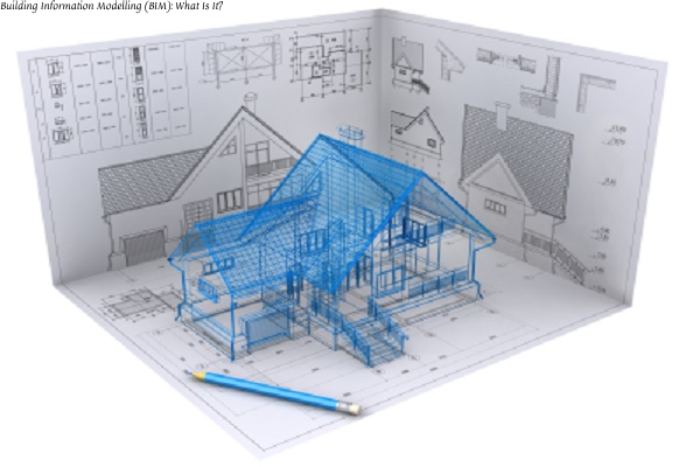Building Information Modelling (BIM): What Is It?

Building Information Modelling (BIM): What Is It?
Construction has become integral to our lives in today’s contemporary environment. Building Information Modelling(BIM), a method of constructing a 3D digital structure model containing all of its data and information in a single file, has been developed to increase construction efficiency.
Table of Contents
1. Introduction
Various stakeholders, including architects, engineers, contractors, and owners, have long been involved in the complicated construction process. It has been more work to handle the enormous data and information needed for a construction project as the industry has developed. Building information modelling (BIM) is useful in this situation.
2. Building Information Modelling (BIM) Definition
The physical and functional qualities of a building are represented digitally using building information modelling (BIM). It is a cooperative technique that enables several stakeholders to cooperate in the same setting to develop an extensive digital model of a building.
3. BIM Tools
A group of technologies known as BIM software are used to develop, manage, and transfer BIM data. Several BIM software options are on the market, including Tekla Structures, Autodesk Revit, Bentley Systems, and ArchiCAD.
4. BIM’s operation
BIM functions by turning a building into a digital model containing all of its data and information. Different stakeholders can access and modify the model’s data layers, including architectural, structural, mechanical, electrical, and plumbing information.
5. Process for Implementing BIM
Several procedures must be performed during BIM installation to produce a good BIM model. These procedures include planning, modelling, coordination, documentation, and analysis.
6. Benefits of BIM
BIM provides several benefits compared to conventional building techniques, including enhanced communication and teamwork, fewer mistakes and rework, higher productivity, better visualisation, and cost savings.
7. Project Management Using BIM
Project management with BIM may increase the general effectiveness of a building project. It supports planning, allocating resources, budgeting, and risk management.
8. BIM and Sustainability
The sustainability of a building may also be increased using BIM. A building’s environmental effect may be examined, and strategies to reduce energy use and greenhouse gas emissions can be discovered using BIM software, which architects and engineers use.
9. BIM and Facilities Management
Facility management, or building upkeep, repair, and usage, is another area where BIM may be used. Facility managers have access to the data and information of the building through the use of BIM software, which helps them to boost efficiency and cut expenses.
10. BIM in the Future
BIM’s future appears bright as it is continually developing. BIM is anticipated to become even more effective and user-friendly with the introduction of new technologies like augmented reality, virtual reality, and artificial intelligence.
BIM’s Advantages for structural and civil engineering
1. Better coordination and collaboration
Thanks to BIM, architects, engineers, contractors, and owners can collaborate and coordinate transdisciplinary projects. It makes sharing data and information easier across platforms, lowering the likelihood of mistakes, disputes, and delays. BIM also makes Real-time communication and feedback possible, facilitating better decision- and problem-making.
2. Improved Analysis and Design
A 3D representation of the infrastructure project is provided through BIM, enabling a better knowledge of its design and operation. The simulation and analysis of numerous design possibilities and scenarios, including structural, energy, and environmental studies, are also made possible by BIM. This aids engineers in enhancing the infrastructure project’s performance and design.
3. Effective Construction Methodology
BIM offers precise and thorough information on the project, which speeds up the building process. Construction schedules and sequences may be created in great detail thanks to BIM, which helps to prevent disputes and delays. Additionally, BIM optimises labour, equipment, and material resources, lowering costs and boosting production.
4. Asset Management and Maintenance
A detailed database of the infrastructure project, including details on its parts, systems, and materials, is provided by BIM. This data may be utilised for asset management and maintenance tasks, including performance monitoring, failure prediction, and replacement planning. The integration of sensors and monitoring tools is also made possible by BIM, which offers real-time information regarding the performance of the infrastructure project.
Also read:-What is soft selling, and how can you include it in your sales strategy?




